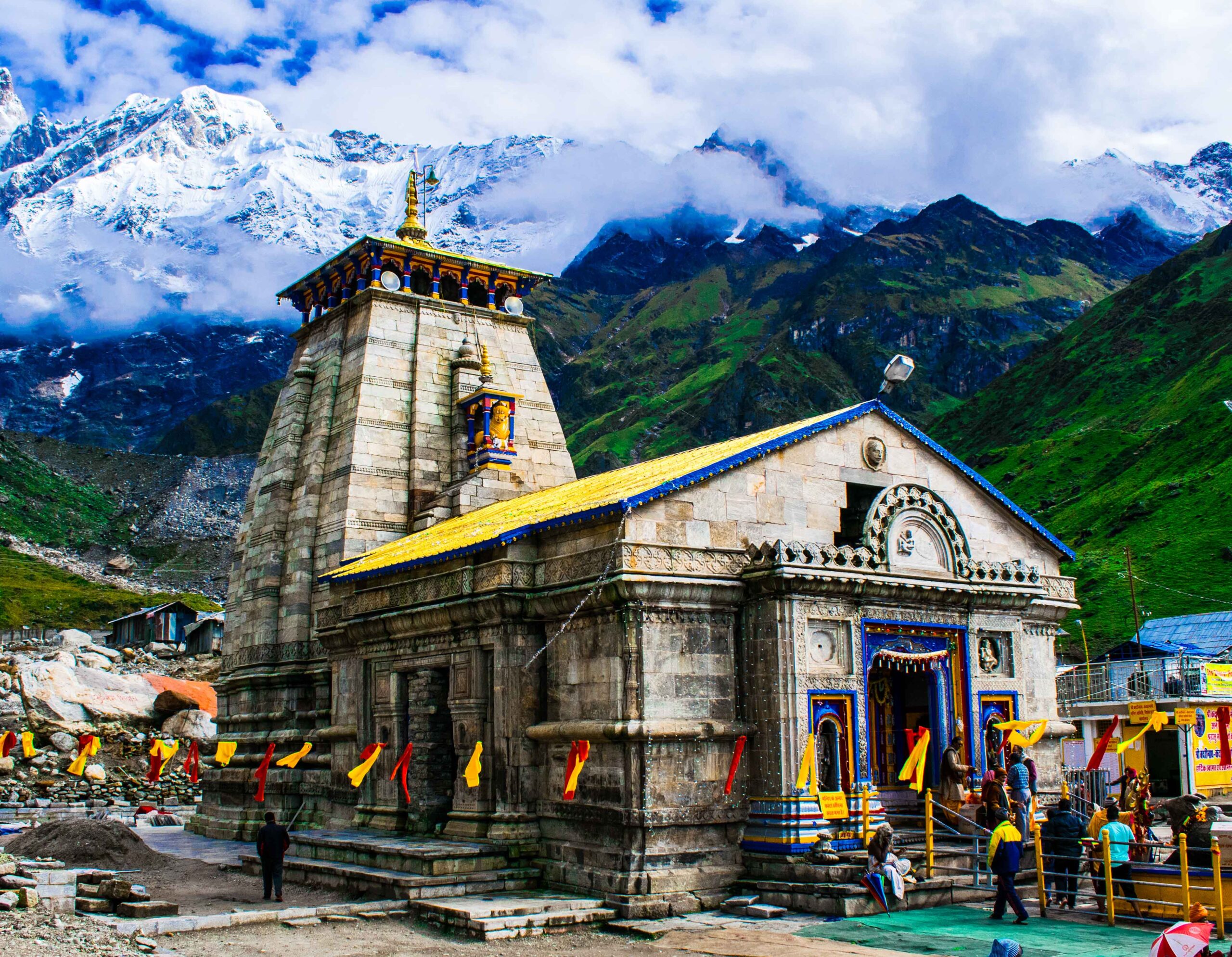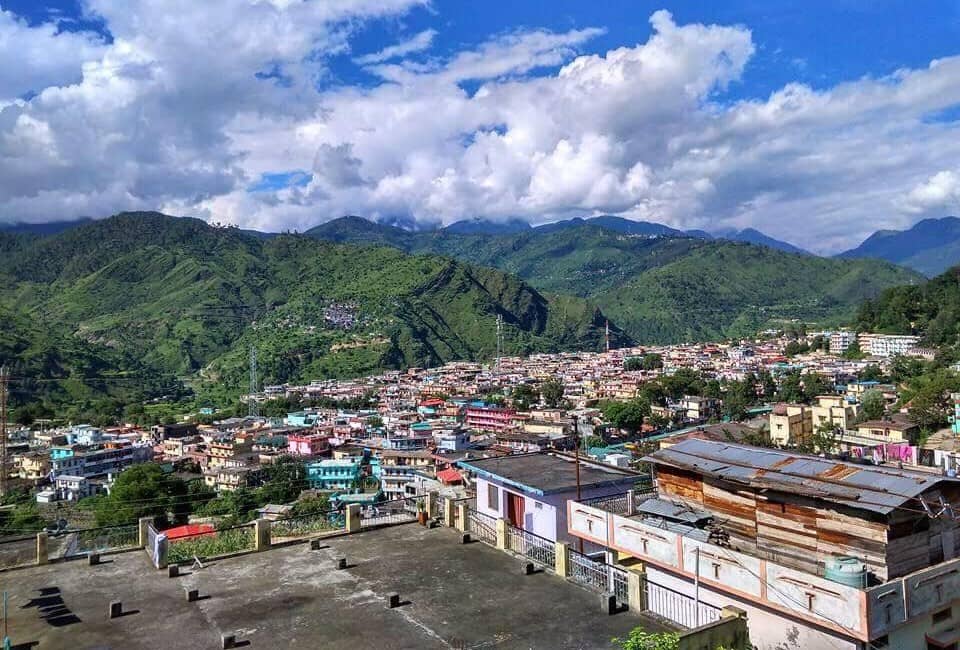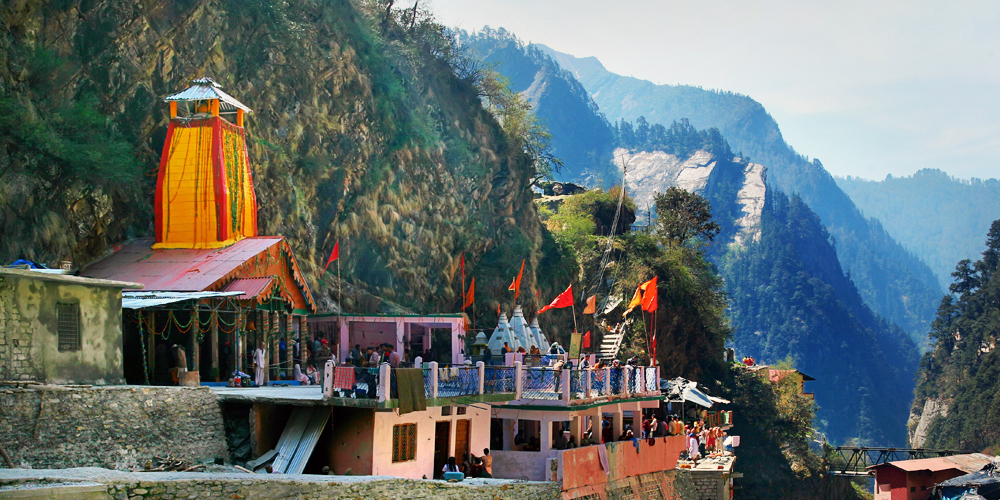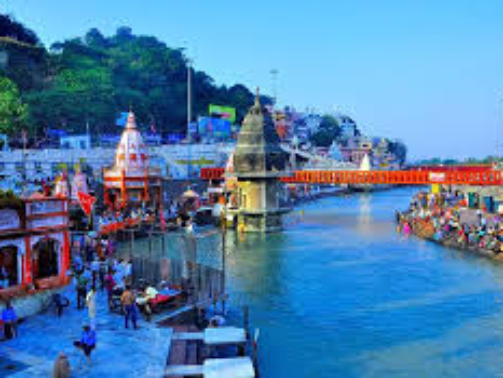Char Dham Tour
10 Days – 9 Nights
Get the quote
The Char Dham Yatra is a revered pilgrimage in India, encompassing four sacred sites: Yamunotri, Gangotri, Kedarnath, and Badrinath. Situated in the serene Himalayas, each site holds profound spiritual significance.
Yamunotri is dedicated to Goddess Yamuna, Gangotri to Goddess Ganga, Kedarnath to Lord Shiva, and Badrinath to Lord Vishnu. The journey offers not only spiritual rejuvenation but also breathtaking natural beauty, from lush valleys to snow-capped peaks. Pilgrims partake in rituals and prayers, seeking divine blessings and spiritual enlightenment. This holy tour is considered a path to salvation and an essential undertaking for devout Hindus.
- Pick up from Haridwar railway station and drive towards Barkot via Mussoorie, enroute to Kempty Fall in Mussoorie. Later drive straight to Barkot. Check into the hotel arrival in Barkot.Overnight stay at Barkot.Barkot Weather – Generally pleasant in summer, the temperature ranges from 25-30 degree Celsius, Winter: The Days are pleasantly cool but the nights are cold,temp ranges from 10 deg to 05 deg.
- Early morning after breakfast (packed breakfast), drive to Jankichatti / Phoolchatti & star trek from here to Yamunotri (6kms) (Either by walk or by horse or by Doli at own cost). After taking bath in Jamunabai Kund’s warm water and having “Darshan” of “Yamunaji” return to Jankichatti by trek. Later drive towards Barkot,Overnight stay at Barkot.Yamunotri Temple: Maharani Gularia of Jaipur built the temple in the 19th Century. It was destroyed twice in the present century and rebuilt again. At Yamunotri, One can cook rice by packing it in a cloth and dipping it in the hot water of the Tapt kund. Pilgrims take this cooked rice home as “Prasad”. Here near the temple “Pooja” can be offered to Divya Shila.Surya Kund: There are a Number of thermal springs near the temple, which flows into numerous pools. The most important of these is Surya Kund.Yamunotri Weather – In summer the maximun temp is 18 degrees and the minimum is 10 degrees celsius. The days are pleasantly cool but the nights are cold.
- Morning after breakfast, drive to Uttarkashi. Check into the hotel arrival in Uttarkashi. Visit Kashi Vishwanath Temple in Uttarkashi.Overnight stay at Uttarkashi.Uttarkashi is home to a number of ashrams, temples. The name of the town reflects its similarity to and location (as north of) the city of Kashi (Varanasi). Similar to Varanasi, the town of Uttarkashi is also situated on the banks of River Ganga.Vishwanath temple – Vishwanath temple is one of the oldest Shiva temples in Northern India. Re-constructed in 1857 by Maharani Khaneti Devi of Tehri State in the ancient architectural style. It is situated at the heart of the town. A massive iron trident, symbolic of divine mother’s, is erected and worshiped from time immemorial at the temple complex. Ganeshji, Sakshi Gopal, Markandeya Rishi’s small shrines are also part of the temple complex. Akhand Jyoti as well as Akhand Abhishek, special aarti in the morning and evening are offered. As per Skunda Puran, Uttarkashi is known as ‘Saumya Varanasi’, the abode of Lord Shiva in Kaliyug and counted as one of the twelve Jyotirlingas.Shakti temple – Right in front of the Vishwanath temple is Shakti temple. It has a big ‘Trishul’ of about 6 meters in height and a circumference of 90 cms. at bottom. Though there are different views about the making of this, the upper part of it seems to be made up of iron and the lower one is of copper. As per the epics this Shakti was thrown on the devils by the Goddess Durga(Shakti), hence it gets its name. Since then this Shakti is erected over here.
Uttarkashi Weather – Generally hot in summer, the temperature ranges from 30-35 degree Celsius but nights are pleasant, Cold in winters.
- Early morning (packed breakfast) drive to Gangotri, enroute at Gangnani take a holy dip in Garam Kund, further drive to Gangotri via the beautiful Harsil Valley. Harsil is famous for its natural beauty and for the majestic views of the Deodar trees and mountains. On arrival at Shree Gangotri, take a holy dip in the sacred river Ganges which is also called Bhagirathi at its origin. Perform Pooja and Darshan, after that relax for some time in the lovely surroundings. Later drive back to Uttarkashi.Overnight stay at Uttarkashi.Gangotri Temple: The temple was constructed by the Gorkha General Amar Singh Thapa in the 18th Century, is situated on the right bank of Bhagirathi.Gangotri Weather – The maximum temperature during summer can go up to 20° Celsius. Summer nights can get cooler with a minimum temperature of 10° Celsius. Light woolen clothes are required while visiting Gangotri during summer. Winter season is very chilly in Gangotri. Gangotri will be covered in sheets of snow during winter. Pilgrim centers remain closed throughout winter due to heavy snow falls.
Package Itinerary:-
Day 1 – Haridwar – Barkot (210kms/7-8hr) Height: 1352 MTS.
Day 2 – Barkot – Yamunotri – Barkot {36kms drive & 5 kms Trek (one side)} Height: 3235 MTS
Day 3 – Barkot – Uttarkashi (100kms/4hr) Height: 1352 MTS
Day 4 – Uttarkashi – Gangotri – Uttarkashi (100kms/3-4 each side) Height: 3048 MTS
Day 5 – Uttarkashi – Guptkashi (220kms/8-9hr) Height: 1319 MTS
Morning after breakfast, drive to Guptkashi via Moolgarh & Lambgoan. Enroute you can see the beautiful river Mandakini at Tilwara. The Mandakini river comes from Kedarnath, drives alongside the river to reach Guptakashi, and visits ArdhNarishwar Temple in Guptakashi. Check into the hotel arrival in Guptakashi.
Overnight stay at Guptakashi.
Guptakashi:- The name Gupt Kashi means “Hidden Benares. Mythology describes how when the Pandava brothers were searching for a glimpse of Shiva, Shivji first concealed himself at Guptkashi, but later fled from them further up the valley to Kedarnath, where the Pandavas finally got their wish fulfilled. There are more tangible connections as well-the Kedarnath pandas (priests) live in Guptkashi during the winter months, and after the Kedarnath temple closes for the winter, the image of Kedarnath passes through Gupt Kashi on its way to Ukhimath (across the valley), where it stays for the winter.
Guptkashi Weather – pleasant in summer, the temperature ranges from 25-30 degree Celsius. Cold in winters.
Day 6 – Guptkashi – Kedarnath (30kms by road & 19kms Trek one way) Height: 3384 MTS
Morning after breakfast departure for Kedarnath dham. Enjoy Kedarnath Darshan.
Overnight stay at Kedarnath.
By Helicopter: Morning our driver will transfer you your pre book Helipad. You can inform the driver about your arrival time whether it will be by helicopter or by trek, so that Driver will be there to pick you up. (note: helicopter ticket is not included in this package).
By Trek: Morning our driver will drop you at Sonprayag then you have to take a local jeep for Gaurikund & then your trek strat for kedarnath ji. After darshan you follow the same & back to Sonpraag. There is a big parking issue so the driver will go back to another palace if his contact no. is not working then you have to arrange another taxi or wait for your driver.
Kedarnath: The Kedarnath shrine, one of the 12 jyotirlingas of Lord Shiva, is a scenic spot situated, against the backdrop of the majestic Kedarnath range. Kedar is another name of Lord Shiva. According to legend, the Pandavas after having won over the Kaurava in the Kurukshetra war, felt guilty of having killed their own brothers and sought the blessings of Lord Shiva for redemption. He eluded them repeatedly and while fleeing took refuge at Kedarnath in the form of a bull. On being followed he dived into the ground, leaving his hump on the surface.
Kedarnath Weather – Due to its high altitude the weather in Kedarnath remains cold for most part of the year. Summer here is cool and pleasant while winter is severe. During the summer season the temperature varies around 20°Celsius. Light woolen wear is recommended. Winter season in Kedarnath is severe with mercury falling to as low as 0°Celsius. During this time the place experiences snowfall as well. Due to the extreme climatic conditions, this time is usually avoided by tourists.
Day 7 – Kedarnath- Guptkashi
Morning after darshan, back to Guptkashi, by Track or helicopter.
Overnight stay at the hotel.
Day 8 – Kedarnath- Guptkashi
Morning after breakfast, drive to Badrinath. Check in to the hotel arrival in Badrinath. Pilgrims after having a bath in the Taptkund have the Darshan of Badrivishal & Aarti in evening. Brahamakapal is significant for Pinddan Shraddh of ancestors (Pitrus). There are other interesting sightseeing spots like Mana, Vyas Gufa, Maatamoorti, Charanpaduka, Bhimkund and the “Mukh” of the Saraswati River. Just within the three kms of Badrinathjee.
Overnight stay at Badrinath.
Mana Village : Inhabited by an Indo-Mongolian tribe, it is the last Indian village before Tibet.
Bhim Pul : On the other side of Mana village, a massive rock forming a natural bridge, lies over the roaring Saraswati river. It presents a spectacular view of water thundering down through the narrow passage under the rock and is believed to have been placed there by Bhim, the second eldest among the five Pandava brothers.
Vyas Gufa (cave): Near Mana Village, this is a rock-cave where Ved Vyas is believed to have composed the Mahabharata and the pauranic commentaries.
Badrinath Weather: The average maximum temperature will be around 18° Celsius and the average minimum is 8° Celsius. Warm and woolen clothes are hence required for a stay in Badrinath throughout the year. Winter in Badrinath is often accompanied by snow falls. Winter is very chilly with an average temperature of 5° Celsius. Due to the extreme climatic conditions, this time is usually closed for tourists.
Day 9 – Badrinath – Joshimath – Srinagar Height: 895 MTS.
Morning after breakfast, driver for Srinagar.
Overnight stay at hotel.
Day 10 – Srinagar – Haridwar
Morning after breakfast, drive for Haridwar via Rishikesh. Rishikesh ‘place of sages’ is a celebrated spiritual town on the bank of Ganga and is surrounded by Shivalik range of the Himalayas on three sides. It is said that when Raibhya Rishi did hard penances, God appeared by the name of ” Hrishikesh ” and this area hence firth came to be known as Rishikesh. visit Rishikesh Temples & Sightseeing – Laxman Jhulla, Ram Jhulla. Drop at railway station.
| Destination | Haridwar, Barkot, Uttarkashi, Gangotri, Guptkashi, Kedarnath, Badrinath, Joshimath, Srinagar |
|---|---|
| Price will Include | Transfers by AC Vehicle. |
| Price will Exclude | Airfare/ Train fare 5% GST. |
10 Days – 9 Nights
Get the quote” Cancel reply






Reviews
There are no reviews yet.